Process flow of applicationengineering
Figure 4: it is demonstration project device diagram of 50000T/Year wine distiller's grains, fresh wine distiller's grains include 60 wt.% water, and it contains a large number of organic acids, water content of wine distiller's grains can be decreased to about 40 wt.% after deacidification drying pretreatment, organic acid content can effectively decreased and odor can be eliminated. then, wine distiller's grains can directly enter double fluidized bed decoupling combustion device for combustion, steam can be produced for making wine. The flue gas generated by combustion is
evacuated by a chimney after being purified by a bag filter.
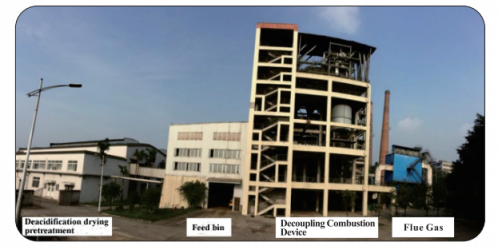
Figure 4: 50000 T/Year wine distiller's grains demonstration project of double fluidized bed decoupling combustion
Operational condition ofdevice
Figure 5 is comparison chart of wine distiller's grains combustion and double fluidized bed decoupling combustion. As for wine distiller's grains combustion with less than 40 wt.% water content, as for circulating fluidized bed combustion, the bottom temperature is too low, the combustion zone will moves up, and refeed valve temperature is too high, slagging and other problems will occur, device operation could be seriously affected, meanwhile, a large amount of coal is required to assist combustion, while the double fluidized bed decoupling combustion device operates stably and the pyrolysis temperature is between 620°C and 680°C, fuel with high water content has no influence on combustion process.
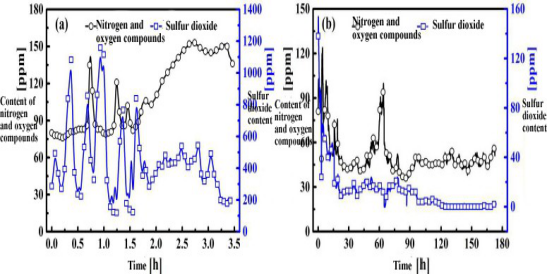
Figure 5: Temperature comparison of circulating fluidized bed combustion of wine distiller's grains and double fluidized bed decoupling combustion:
(a)Circulating fluidized bed combustion (b)Double fluidized bed decoupling combustion.
Fumeemission
Figure 6 is fume emission comparison diagram of wine distiller's grains combustion and double fluidized bed decoupling combustion. The concentration of NOx in flue gas is kept between 90ppm and 150 ppm for circulating fluidized bed combustion of wine distiller's grains(Dry basis contains about 4% nitrogen),amount of sulfur dioxide is higher than 200 ppm, a large amount of coal is required to assist combustion. The concentration of NOx in the flue gas is not more than 50ppm for double fluidized bed decoupling combustion, amount of sulfur dioxide is close to 0ppm, without any desulfurization and denitrification facilities, emission standards stipulated by the environmental protection department can be met. Figure 7 is flue gas test report (national gas product quality supervision and testing center)of double fluidized bed decoupling combustion of wine distiller's grains, inspection result: nitrogen oxide content is 41.6 ppm, content of sulfur dioxide is less than 0.1ppm.
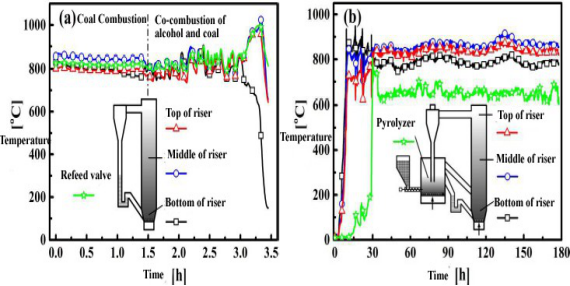
(a)Circulating fluidized bed combustion (b)Double fluidized bed decoupling combustion.
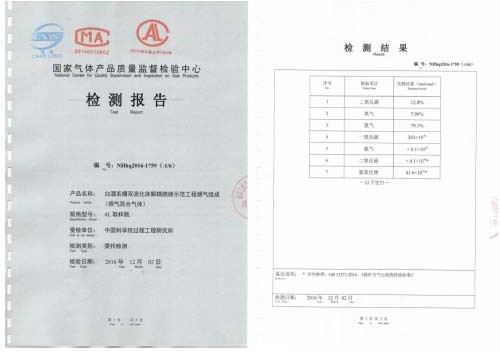
Figure 7: Smoke detection report of double fluidized bed decoupling combustion of wine distiller's grains
System thermalefficiency
Figure 8 is comparison diagram of system thermal efficiency and steam output between circulating fluidized bed combustion and double fluidized bed decoupling combustion. Traditional circulating fluidized bed technology can only deal with fuel with water 10-20 wt.% content, fuel with high water content needs deep drying; double fluidized bed decoupling combustion technology is applicable to fuels with a moisture content of up to 40 wt.%, mild dry can meet the requirements. if one ton water is dried in a day, amount of steam is between 1.3 and 1.4t, there is much more energy consumption. According to figure 8, thermal efficiency of double fluidized bed decoupling combustion technology is 63.4%, compared with circulating fluidized bed combustion technology, higher degree is between 3.2% and 4.3%, higher degree of steam output of unit dry basis material is between 0.17t/(h•t) and 0.23 t/(h•t).
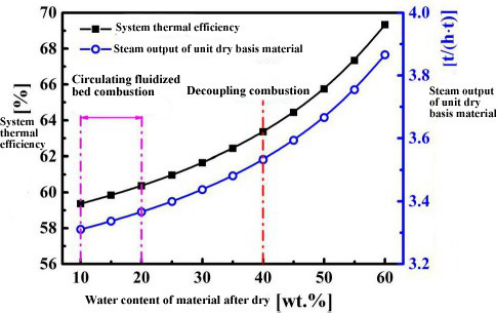
Figure 8: Comparison of system thermal efficiency and steam output between circulating fluidized bed combustion and double fluidized bed decoupling combustion。
(5) Benefits of energy saving and emission reduction
Benefits of energy saving and emission reduction for the past three years
Year | 2015 | 2016 | 2017 | Total |
Handling capacity of wine distiller's grains (10000 Tons) | 4.9 | 5.6 | 2.9 | 13.4 |
Steam output (10000 Tons) | 6.9 | 7.8 | 4.1 | 18.8 |
Steam output value (10000 Yuan) | 1932 | 2184 | 1148 | 5264 |
Profit (10000 Yuan) | 1722 | 1974 | 1030 | 4726 |
Handling cost of saving denitrification and distiller's grains (10000 Yuan) | 660 | 708 | 364 | 1732 |
CO2 emission reduction (10000 Tons) | 1.94 | 2.18 | 1.17 | 5.29 |
The project totally handled 0.134 million tons of wine distiller's grain and produced 0.188 million tons of steam between 2015 and 2017, according to steam production cost calculation of natural gas combustion, the cost of steam per ton is about 280 Yuan, net output value of steam produced by wine distiller's grains was 52.64 million Yuan, Because of the reduction of fuel costs, the net profit is 47.26 million Yuan, Meanwhile, handling cost of saving denitrification and distiller's grains is 17.32 million Yuan. cumulative emission reduction of carbon dioxide is 52900 tons for the past three years, 20200 tons coal or 1210 m³ natural gas are saved.
(6)Circular economy technology of liquor-making industry
Double fluidized bed decoupling combustion technology converts wine distiller's grain into the steam required for brewing, combustion residue ash is rich in Si, K, Mg, P and other elements, it can process and produce sorghum fertilizer, raw materials can be provided for brewing process.
Thus, development of wine distiller's grain energy-regeneration and biological ash fertilizer technology forms sorghum planting, liquor brewing, straw/distiller's grains energy and ash fertilizer as circular economy mode of liquor industry, besides, key feeding chain technology can be provided to circular Economy Park construction of liquor industry.
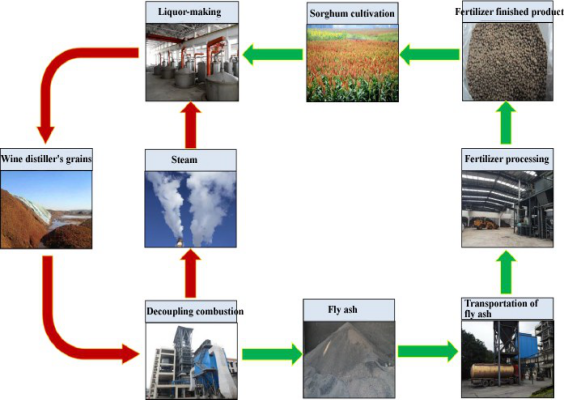
Figure 9: Circular economy technology of liquor-making industry